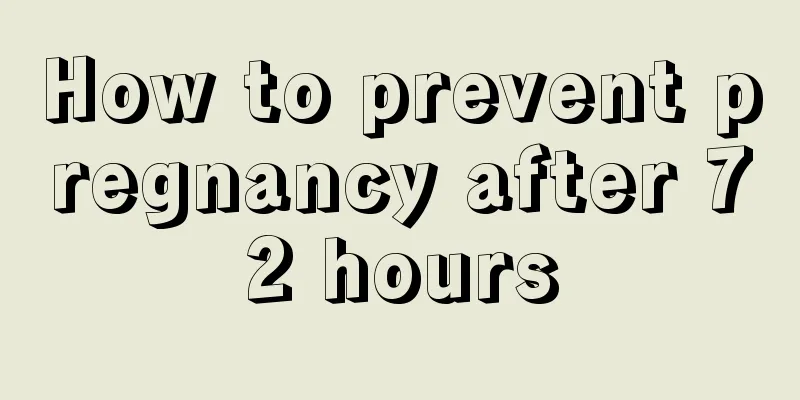What to do if a pregnant woman has pubic pain

|
Many pregnant women will find that they have pain in their pubic bone after giving birth. Don’t worry, this is a normal phenomenon for many pregnant women after giving birth. This requires us to treat it carefully and it will recover slowly. So how can we help postpartum pubic pain recover better? In fact, many keys lie in strengthening bone nutrition. Next, let’s take a look at how to recover from postpartum pubic pain. 1. Strengthen bone nutrition The components of the pelvis are nothing more than protein, calcium and fiber. The stronger the bones, the more stable the pelvis will be and less prone to damage. Therefore, adding some foods that are beneficial to bones has become part of the list of foods for postpartum pelvic recovery. Calcium-fortified milk, AD calcium milk, fish, shrimp, oysters, egg yolks, walnuts, hazelnuts, etc. are rich in calcium and trace elements such as selenium, magnesium, zinc, and iron. You may want to eat more of them. Of course, don't forget to get more sun exposure so that the ultraviolet rays in the sun can shine on the skin to form vitamin D, which can promote the body's absorption of calcium and strengthen bones. 2. Use a professional pelvic belt The pelvic belt is not the postpartum abdominal belt we often talk about now, but a professional postpartum pelvic correction belt. The pelvic correction belt should be selected by an orthopedic surgeon after the pelvis is examined to determine the appropriate model and size. The pelvic correction belt is an effective measure for the rapid recovery of the pelvis. Currently, the most commonly used one is the diamond-shaped pelvic correction belt. It is invented by combining a diamond structure with ergonomic research, and can correct and restore the pelvis in the most scientific and maximal way. It is also relatively simple, convenient, safe and effective to use, and has a good effect on postpartum pelvic correction and recovery. There are many types of pelvic correction belts on the market, but not every one of them is actually applicable. As a result, users use them but it is useless. They waste time and miss the best time for pelvic recovery. Therefore, when choosing a pelvic correction belt, postpartum women should not follow the trend or be greedy for cheapness. They must fully understand the product quality and the rationality of the product structure to ensure the effectiveness of use and achieve the purpose of timely restoration of the pelvis after childbirth. In fact, the two methods introduced above are very helpful for pregnant women to recover from pubic pain after childbirth. Generally, as long as you stick to it, you will see the results soon. So if you have pubic pain after childbirth, come and learn this. You can also share the above methods with your family and friends. I wish you all good health and a happy life. |
<<: What to do if placenta remains after delivery?
>>: What should I do if I don't have my period?
Recommend
Dilation and labor timeline
There is actually a rough timetable for dilation ...
There is fluid accumulation next to the gestational sac in 2 months of pregnancy
During the second month of pregnancy, a checkup r...
Why do gout attacks become more frequent after starting to lower uric acid?
Nowadays, people’s lifestyle and diet are relativ...
What to do if you keep retching during pregnancy
Women often feel like vomiting after they become ...
Growths on the inner side of the labia minora
What causes cauliflower-like growths? It is gener...
How to know the exact number of days of pregnancy
After a woman becomes pregnant, she will usually ...
What are the dangers of benign ovarian cysts?
The incidence of ovarian cysts is relatively high...
What should you pay attention to during sexual intercourse during menstruation?
Menstruation is also called period, and it is cal...
Is conservative treatment of ectopic pregnancy painful?
Ectopic pregnancy is a serious disease that endan...
How many varieties of jackfruit are there? How to tell if jackfruit is ripe?
Jackfruit has thick flesh, golden yellow color, t...
What is the reason for the vague pain in the lower abdomen?
Everyone is familiar with the dull pain in the lo...
Which side of the medical surgical mask is on the outside? How to distinguish the front and back of the medical surgical mask?
We all know that there are many types of masks, a...
Is the pregnancy stable at three months?
Many pregnant friends feel that they can relax af...
Will early menstruation every month affect future fertility?
Menstruation is something that every girl goes th...
100 tips on women's health
Women need heat to maintain their health. Cold ph...









